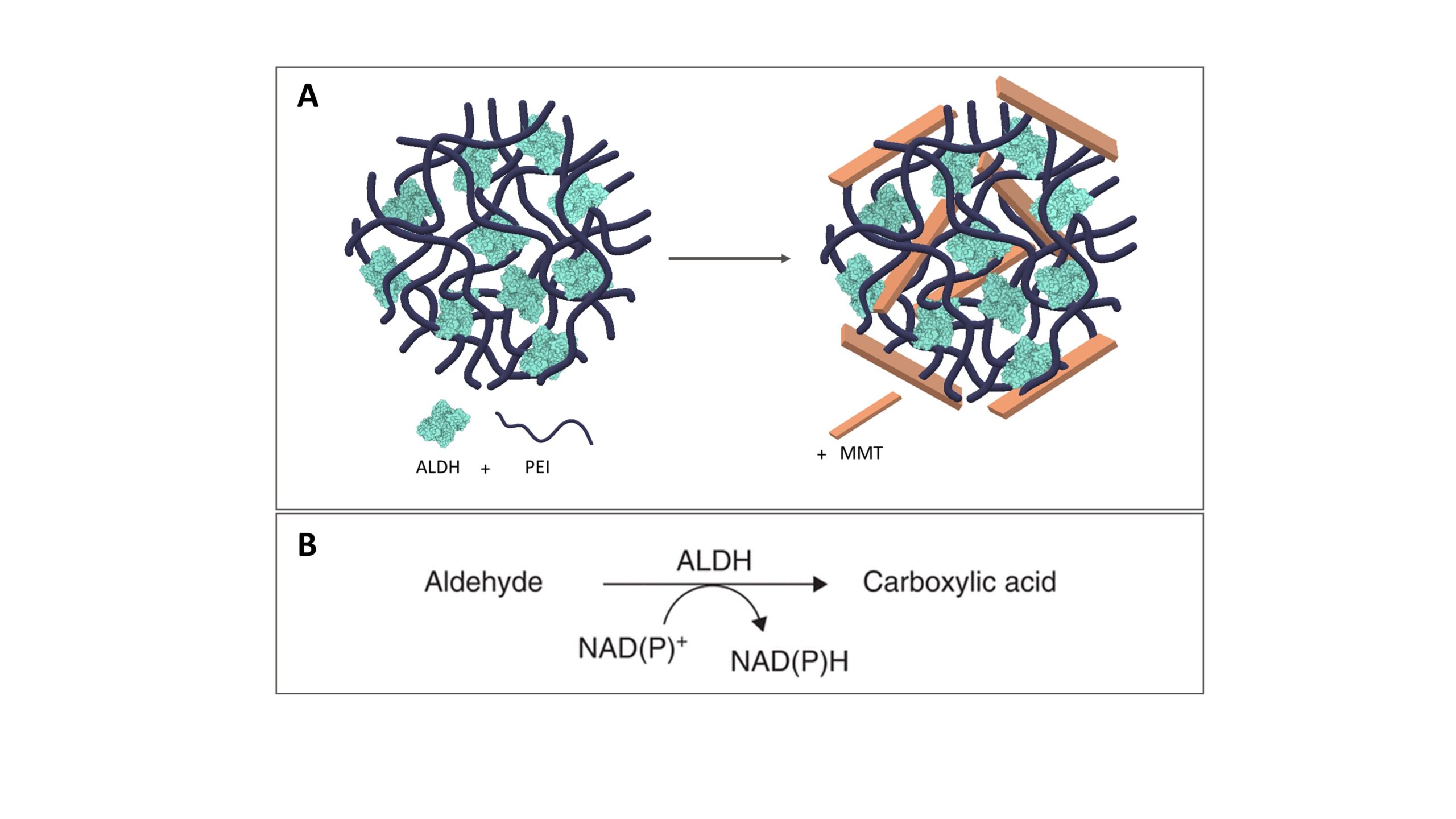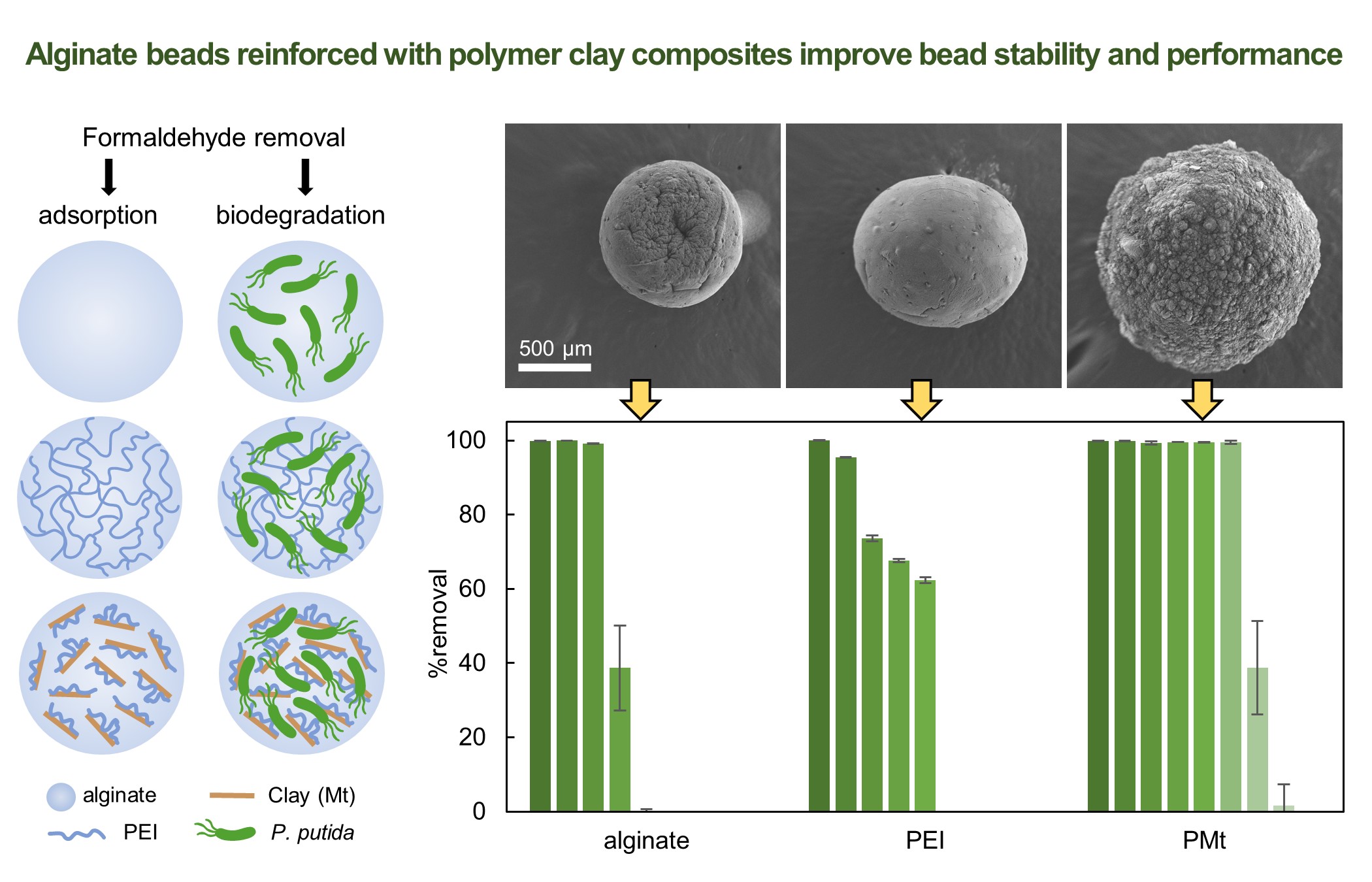Remediation of organic pollutants: Water remediation technologies have advanced over the past decades, yet, there are ongoing problems that prevent high remediation efficiency and environmental sustainability. Chemical adsorption, for example, only concentrates pollutants on the solid matrix requiring further handling of the spent sorbent. Bioremediation can completely degrade organic pollutants, yet is difficult to implement due to the sensitivity of the bacteria and enzymes to unfavorable environmental conditions. In our lab, we attempt to harness chemical and biological processes – which are recurring by nature – along with mineral surface interactions, to improved remediation of challenging pollutants, both in terms of efficiency and ease of implementation.
Examples of ongoing projects.
Formaldehyde remediation from industrial waste-streams: In this work we propose a one-step solution by synergistically combining two remediation strategies, biological and chemical, to improve on the separate systems and overcome the major pitfalls of each. Our aim is to design biomaterials that rapidly yet reversibly adsorbs formaldehyde which is then degraded by co-localized bacteria or enzymes. The immobilization protects the biological components from detrimental conditions allowing efficient remediation. The adsorption-degradation combination also allows the material to self-regenerate by freeing-up new FA-binding sites, enabling continuous use.
https://www.ynet.co.il/articles/0,7340,L-5568225,00.html

Figure 1. Enzyme – polyelectrolyte-clay composite for aldehyde degradation

Figure 2. Alginate beads with bacteria-polyelectrolyte-clay composites for formaldehyde removal
Removal of recalcitrant perfluorinated pollutants: Our lab also designs novel bi-functional materials that combine adsorption and chemical oxidation to remove and degrade recalcitrant pollutants. The materials are based organically modified clay minerals and oxides that serve both as adsorbents and as Fenton-Like catalysts for oxidation reactions. In the figure is an illustration of an iron-oxide coated clay modified by a glucose-based polymer, cyclodextrin. This is a low-cost and benign material which can facilitate high affinity adsorption of a range of pollutants and effectively concentrate them near the iron-coated clay catalyst. The co-confinement of the pollutants and the reactive species in the cyclodextrin toroid promotes rapid and efficient oxidation on the surface of the composite.
Layer-by-Layer (LBL) coating of herbecide-degrading bacteria: An innovative platform was designed by coating herbecide degrading bacteria with polyelectrolytes via LBL method to help mitigate contamination of herbecides that leach from their target sites (i.e. agricultural fields). This novel platform has several strengths: a. enhanced biodegradation rates as a result of concentrating the substrate near the bacteria. b. endurance of biological activity in difficult to manage external conditions and self-cleaning properties of the armor which allow for long-term continuous application. Furthermore, the bacteria are essentially a bag of enzymes and are not able to proliferate, preventing ecological damage by non-native organisms. These novel nano-biodegrading particles can allow continued yet responsible use of agrochemicals while significantly decreasing their environmental footprint.

